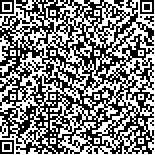| 摘要: |
| [目的]文章利用测土配方施肥和耕地地力评价结果,对高县玉米种植区土地进行生态适宜性评价。[方法]在GIS的支持下,结合层次分析法与空间插值等方法,选取气候条件、立地条件、土壤理化性状、土壤养分4个方面10个因子进行评价。[结果](1)研究区玉米种植区可以划分为高度适宜区、适宜区、次适宜区和不适宜区,其面积分别为7 4073hm2、24 9386hm2、17 1160hm2和6 8230hm2,分别占耕地总面积的132%、443%、304%和121%; (2)影响该区域玉米种植适宜性的主要指标有生育期间≥10℃积温、生育期间降雨量、有机质、速效钾; (3)经实地调查核实与对比分析,评价结果与实际相符,适合玉米生长区域主要在河流沿岸阶地、平坝以及缓丘、低丘区,不适合种植在中部、西南部和东南部高丘、低山区。[结论]该研究认为对于次适宜种玉米的区域应以平整土地、增厚土层、培肥地力为重点进行耕地质量建设; 高度适宜和适宜区,可以引领优质玉米发展形成优势突出和特色鲜明的玉米产业带。反之,不适宜种植玉米的地区则应及时调整农业产业结构,改种其他作物或退耕还林。 |
| 关键词: 玉米GIS生态适宜性耕地地力评价层次分析法 |
| DOI: |
| 分类号:S513,S17 |
| 基金项目:四川省农村发展研究中心项目“农村改革中土地承包经营权退出机制研究——以全国农村改革试验区内江市市中区为例”(CR1628) |
|
| EVALUATION OF LAND ECOLOGICAL SUITABILITY IN MAIZE PLANTING AREAS SUPPORTED BY GIS |
|
Wang Shan1,2, Liao Guitang3※, Deng Yonggang4, Tu Junyu4, Xu Xiaokang4, He Gang4, Li Linling5, Dai Linjia5
|
|
1. College of Geography and Resource Sciences, Neijiang Normal University, Neijiang 641100, Sichuan, China;2. School of Environmental and Resource Sciences, Zhejiang A&F University, Lin′an 311300, Zhejiang, China;3. College of Resources and Environment, Chengdu University of Information Technology, Chengdu 610103, Sichuan, China; 4. Agricultural and Rural Bureau of Yibin City, Yibin 644000, Sichuan, China; 5. Agricultural and Rural Bureau of Gao County, Gao County 645150, Sichuan, China
|
| Abstract: |
| Based on the soil testing formula fertilization and arable land fertility evaluation results, ecological suitability of land in maize growing areas is evaluated. With the support of GIS technology and the analytical hierarchy process (AHP) , the evaluation index system of ecological suitability for maize planting was established by selecting 10 indices, which from the factors of climate, site conditions, soil physical and chemical properties, soil nutrients. The results were showed as follows.(1)The maize planting areas in Gao county could be divided into highly suitable area, suitable area, sub suitable area and unsuitable area. The areas were 7 407.3 hm2, 24 938.6 hm2, 17 116.0 hm2 and 6 823.0 hm2, respectively, accounting for 13.2%, 44.3%, 30.4% and 12.1% of the total cultivated land. (2) The main indicators that affecting the suitability of maize planting in this region were growth period accumulated temperature (≥10 ℃), rainfall during growth period, soil organic matter and available potassium. (3) Through field investigation and comparative analysis, the evaluation results were consistent with the actual situation. The suitable areas for maize growing were mainly in riverside terraces flat dams, gentle hills and low hills, but not suitable for planting in the central, southwest and southeastern high hills and low mountains. In summary, this research suggests that for areas that are sub suitable for maize planting, the quality of cultivated land should be strengthened with the focus on leveling the land, thickening the soil layer and fertilizing the land. For highly suitable and suitable areas, it could promote the development of high quality maize and form a maize industry belt with outstanding advantages and distinctive characteristics. Conversely, to those which are not suitable for maize planting, the agricultural industrial structure should be adjusted to replant other crops or return farmland to forests. |
| Key words: maize geographic information system ecological suitability cultivated land fertility evaluation analytic hierarchy process |

